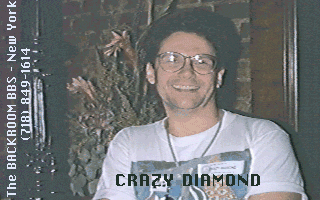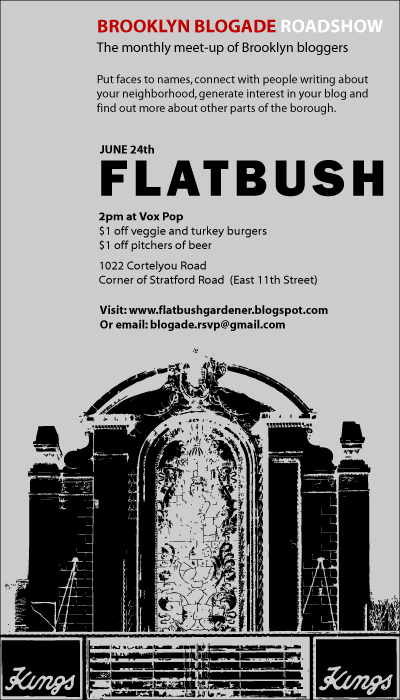2008.03.10: Welcome – I guess – New York magazine Intelligencer readers. I encourage you to read my post about the BlogFest itself, which inspired this “hyperniche nostalgia,” as NY characterizes it. (Shouldn’t that be hypo-niche? sub-niche? micro-niche?)
Crazy Diamond, aka Flatbush Gardener, circa 1980s.

I wrote the following as part of my Brooklyn Blogfest coverage. I now find myself in the position of being one of the coordinators of the first Brooklyn Blogade Roadshow, which it is hoped will take the spirit and energy of the Brooklyn Blogfest on the road to different neighborhoods in Brooklyn. I hope to provide details of the inaugural event later tonight or this week.
I’m highlighting this bit of autobiography and technology history in its own post here because it expresses what I’m trying to bring of myself to this first event.
[Written 2007.05.11]
Back in the Day
Gather round me, children. Close your eyes, and try to imagine it. It was long before the Web, when the Internet existed only in military and select academic settings. It was the time before GUIs, before mice and color monitors, when MS-DOS and 1200bps dial-up modems roamed the Earth.
There were these things called computer bulletin board services, BBS for short. Your computer told your modem the phone number of the BBS. Your modem dialed, their modem answered, and both modems connected with each other. Then your computer could talk to their computer. Directly. No Web, no Internet. Machino a machino. You could leave messages for other BBS members; the precursor of email. You could even chat with someone else who was also logged in; the precursor of IM today.
I was a member of a BBS based in New York City called The BackRoom. It was, as one might guess from the name, a gay BBS. It was an online community of gay men, mostly, living in NYC, mostly. We had handles, like CB radio users (1970s technology). My CB handle in the 1970s, 30+ years ago, was Green Thumb. My BackRoom handle was Crazy Diamond, after the Pink Floyd song, “Shine On, You Crazy Diamond.”
Donor Recognition plaque on the wall of the second floor landing of the center staircase of the NYC Lesbian, Gay, Bisexual and Transgender Community Center.

We were an online community. A community of humpy nerds, of which I was one. We were not only virtual. We also met, face-to-face, at a periodic event called the Backroom Bash. Sometimes we met at a bar, sometimes at the home of a member or the Backroom founder and sysop, Art Kohn. We built community online, with handles and anonymity. We met in person, still with our handles, and less anonymity, and built community there as well. Our virtual community was enriched by our interactions in 3D, and vice versa.
Last night [the Blogfest] reminded me of that.





